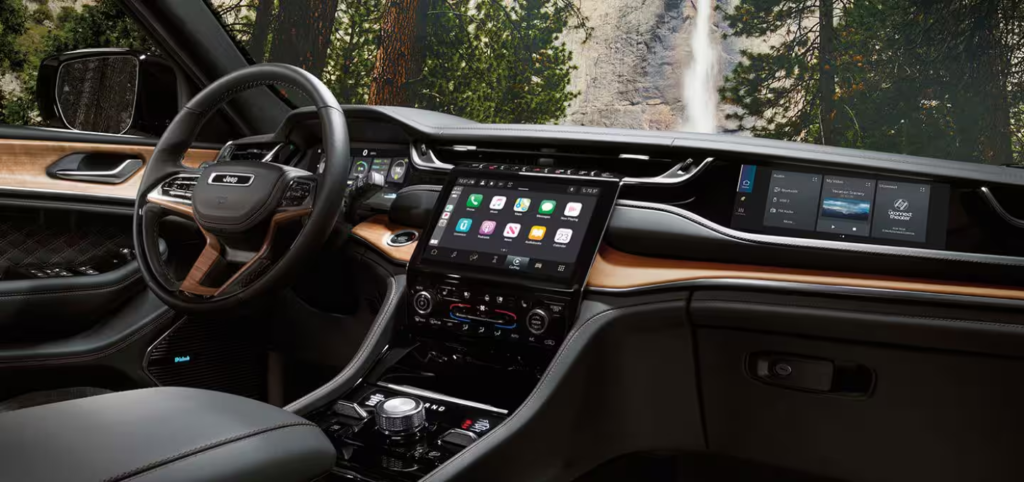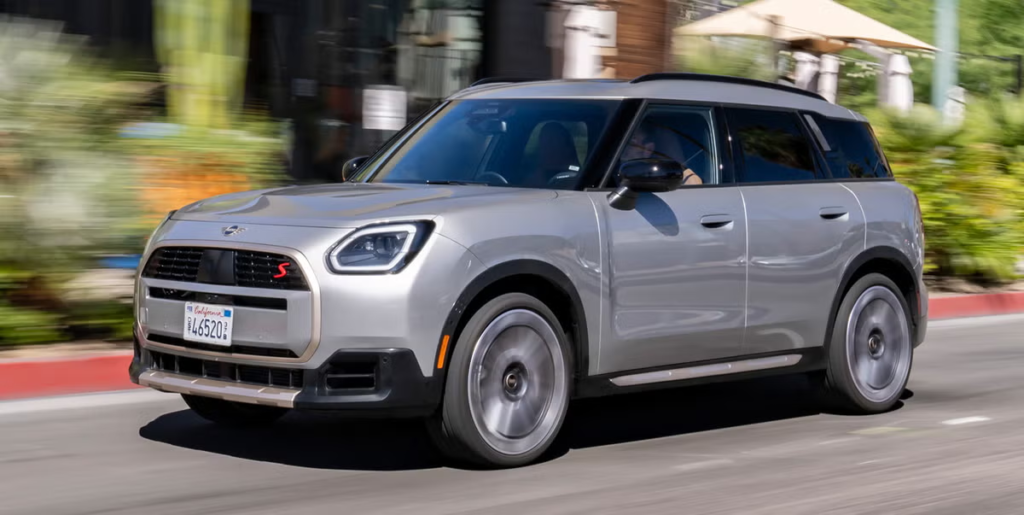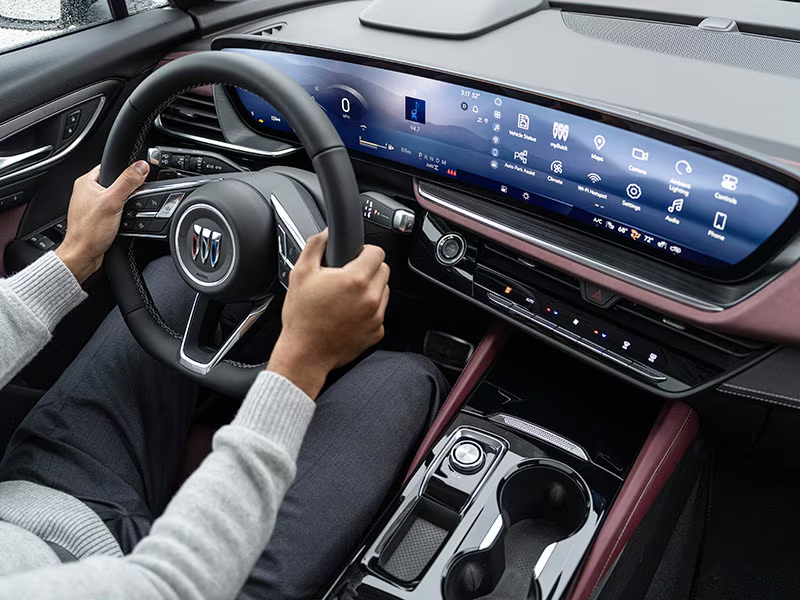Gadgets reviews 2025
Americans spend an average of $47,000 on a new SUV in 2024 – making it one of the most significant purchases in most households. Yet marketing hype and glossy advertisements often mask serious mechanical issues, design flaws, and reliability problems that can turn your dream SUV into a costly nightmare. We’ve consulted experts like Car and Driver and CarEdge to help identify popular SUV models with concerning track records. This guide exposes the hidden problems of these common SUVs, from transmission failures and electrical gremlins to rapid depreciation rates and poor safety scores.
10. Nissan Armada (Exterior)

The 2024 Armada presents itself as a capable full-size SUV with its robust 400-horsepower V8 engine, but this powertrain proves to be one of its major drawbacks. The dated engine technology results in abysmal fuel economy, making it increasingly expensive to operate in an era of fluctuating gas prices. The interior, while spacious at first glance, suffers from poor space utilization and dated design elements.
Nissan Armada (Interior)

The Armada’s infotainment system feels particularly antiquated compared to modern competitors, lacking the intuitive interface and advanced features that have become standard in this price range. The high load floor creates practical challenges for cargo loading, while the cramped third-row seating limits its utility as a true eight-passenger vehicle. These limitations, combined with its cumbersome size and poor maneuverability, make it difficult to justify its premium price point.
9. Ford Expedition (Exterior)

The Ford Expedition’s reputation as a family-friendly full-size SUV is severely undermined by its reliability issues and astronomical ownership costs. The transmission problems that plague many units can lead to repair bills exceeding $6,200, a significant expense that potential buyers must consider. The aluminum body panels, while innovative in theory, have proven problematic with widespread reports of paint peeling and bubbling.
Ford Expedition (Interior)

Beyond these quality concerns, the Expedition struggles with its fundamental design as a daily driver. Its massive size, while providing ample interior space, is less suited for parking in dense urban centers. The high initial purchase price, combined with substantial depreciation and maintenance costs, makes it a questionable value proposition for most families seeking a reliable and cost-effective transportation solution.
8. GMC Yukon XL (Exterior)

The GMC Yukon XL’s premium positioning and luxurious aspirations are severely compromised by its staggering total cost of ownership, which reaches an eye-watering $92,343 over just five years. This figure includes massive depreciation of $45,316, substantial insurance costs of $12,555, and fuel expenses totaling $16,229. The maintenance costs, while not the highest in its class at $2,885, still add to the financial burden of ownership.
GMC Yukon XL (Interior)

The vehicle’s fuel efficiency ratings of 16-17 MPG combined are particularly problematic in today’s market, where even large SUVs are expected to deliver reasonable economy. This poor efficiency not only impacts running costs but also limits the vehicle’s practical range, requiring more frequent fuel stops during long journeys. While the Yukon XL offers impressive space and capability, these advantages come at a price that’s increasingly difficult to justify in a market with more efficient and cost-effective alternatives.
7. Jeep Grand Cherokee

The Jeep Grand Cherokee’s reputation as a capable off-roader is overshadowed by its concerning total cost of ownership, which reaches $70,241 over just five years. This substantial figure includes $28,727 in depreciation, $11,425 for insurance, $17,023 for fuel costs, and $9,652 in interest payments. The maintenance costs, while relatively modest at $3,415, still contribute to a significant financial burden that makes the vehicle’s value proposition questionable in an increasingly competitive market.
Jeep Grand Cherokee (Interior)

The 2024 model year brings additional concerns, with a substantial base price increase of $8,925 and the removal of previously standard features like Quadra-trac II and trailer-sway damping, which now require additional investment. The vehicle’s reliability problems include common issues with erratic electronic shifting, engine stalling, alternator failures, and ignition switch problems. While the interior appears upscale in marketing materials, the actual materials and build quality fall short of expectations, and excessive road noise further detracts from its premium aspirations.
6. Hyundai Kona EV (Exterior)

The 2024 Kona EV struggles with significant practical limitations despite its competitive pricing. Road noise penetration is considerable, and the vehicle exhibits surprising wind noise. The suspension tuning is particularly problematic, with the vehicle bouncing over pavement undulations and displaying poor handling characteristics that could affect passenger comfort.
Hyundai Kona EV (Interior)

Real-world efficiency falls short of EPA estimates, with the vehicle achieving only 25 mpg during testing, lower than its rated figures. The driving experience can be challenging, with the vehicle being particularly sensitive to aggressive driving styles, which significantly impacts range and efficiency. Interior space utilization is compromised by design choices that limit both passenger and cargo capacity.
5. Buick Enclave (Exterior)

The Buick Enclave’s attempt to compete in the premium SUV segment is hampered by several significant shortcomings that undermine its value proposition. Starting with a base MSRP of $43,900 for the 2024 model, the Enclave restricts many advanced safety features to higher trim levels, forcing buyers to spend even more for what should be standard equipment at this price point. The interior materials and build quality fail to distinguish themselves from non-luxury competitors, making the premium pricing difficult to justify.
Buick Enclave (Interior)

The vehicle’s fuel efficiency lags behind other V6-powered competitors in its class, adding to the long-term cost of ownership. While the Enclave offers comfortable seating and adequate cargo space, these positive attributes are overshadowed by its uninspiring driving dynamics and a general lack of refinement that buyers expect in a luxury-branded vehicle. The overall package suggests that buyers are paying a premium primarily for the Buick badge rather than superior quality or features.
4. MINI Countryman (Exterior)

The MINI Countryman’s distinctive styling and brand heritage mask fundamental design flaws that significantly impact daily usability and comfort. The driving position is compromised by an offset steering wheel and limited reach adjustment, while the head restraints force an uncomfortable forward-leaning posture. These ergonomic issues become increasingly apparent during longer drives, detracting from the vehicle’s appeal as a daily driver.
MINI Countryman (Interior)

Interior quality is another area where the Countryman falls short of expectations, with numerous hard plastics throughout the cabin that feel out of place given its premium pricing. The high load lip makes cargo loading more difficult than necessary, and the overall space utilization is poor for a vehicle in this segment. While the Countryman offers engaging handling characteristics, these driving dynamics come at the cost of practical functionality and comfort that many buyers prioritize in a compact SUV.
3. Buick Envision (Exterior)

The Buick Envision features surprisingly mediocre reliability but decently priced maintenance. Maintenance costs average $2,776 over the first five years (which is lower than the industry average by $8,818), – but the Envision also has a 5% chance of requiring major repairs during this period. The vehicle’s build quality has been particularly problematic in recent models, with issues reported in body hardware including windows, locks, latches, and seat controls.
Buick Envision (Interior)

Quality control extends just beyond these issues – electrical troubles, dash light problems, and malfunctioning heated seats are also commonly reported issues. These persistent build quality problems make it difficult to justify its premium positioning in the market.
2. Mazda CX-9 (Exterior)

The Mazda CX-9’s apparent luxury aspirations are undermined by practical limitations and maintenance concerns. While maintenance costs average $7,778 over ten years, beating the industry average by $472, there’s still a nearly 22% chance of requiring a major repair during that period. The vehicle’s third-row seating is also particularly problematic – it’s nearly unusable for adults.
Mazda CX-9 (Interior)

The CX-9’s fuel efficiency is also disappointing, with real-world consumption often falling short of EPA estimates. These ongoing expenses, combined with limited cargo space behind the third row, make it less functional for larger families or anyone looking for plenty of storage capacity.
1. Nissan Pathfinder (Exterior)

The Nissan Pathfinder has been plagued by numerous reliability issues across multiple generations. Common problems include transmission failures, engine stalling, and navigation system malfunctions. The 2013-2016 models particularly suffered from premature wear on timing chain guides, resulting in rattling and tapping noises from the engine.
Nissan Pathfinder (Interior)

More recent models continue to face challenges with fuel system issues, including faulty fuel pumps and automatic start/stop system failures. The interior feels less refined compared to competitors, and mediocre fuel efficiency doesn’t help justify its value. Transmission problems have been particularly costly, with repairs averaging between $4,000-$4,600. Combine these issues with the relatively poor build quality and reliability ratings, and the Pathfinder is a questionable choice, especially with how competitive the midsize SUV market is.

